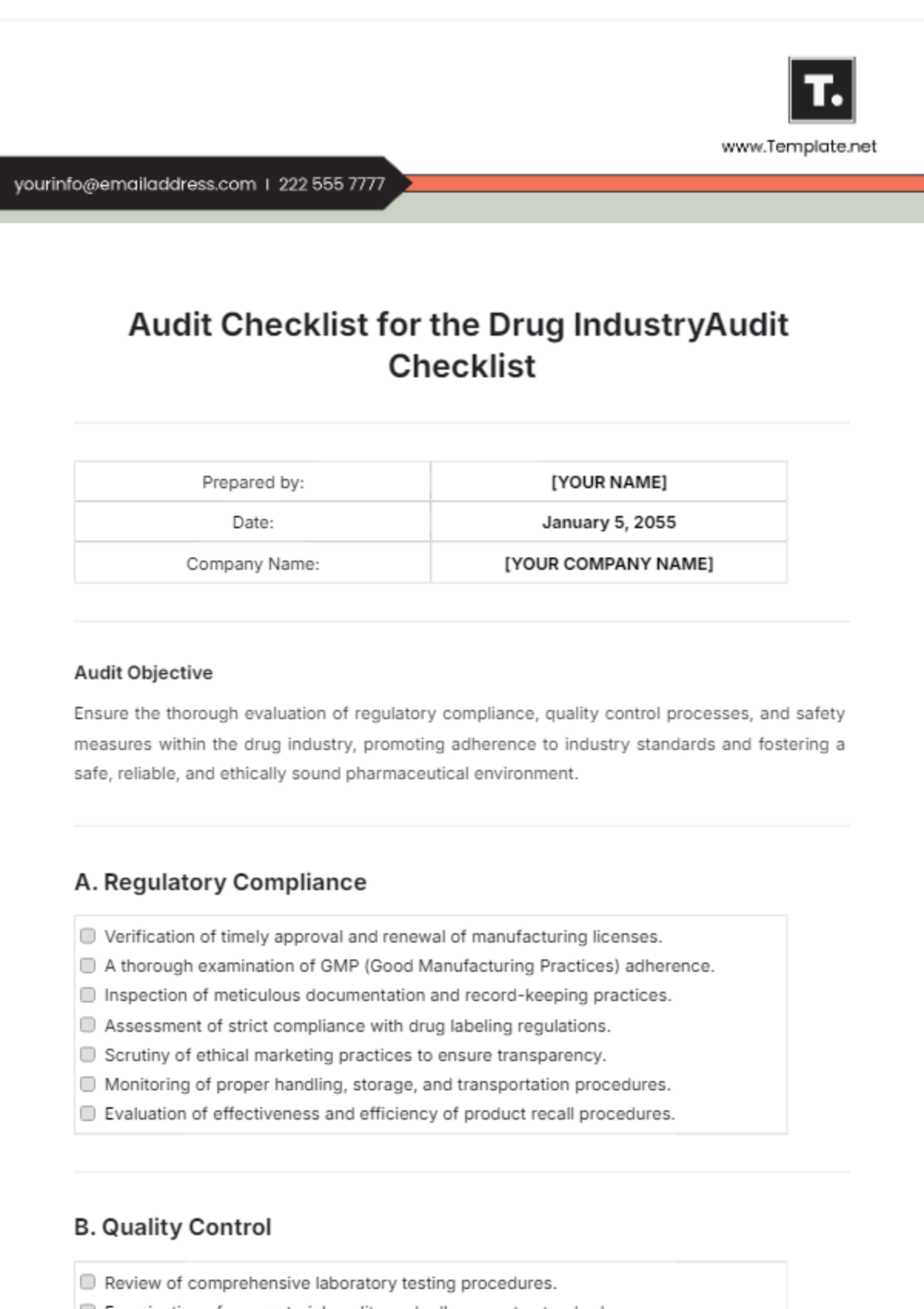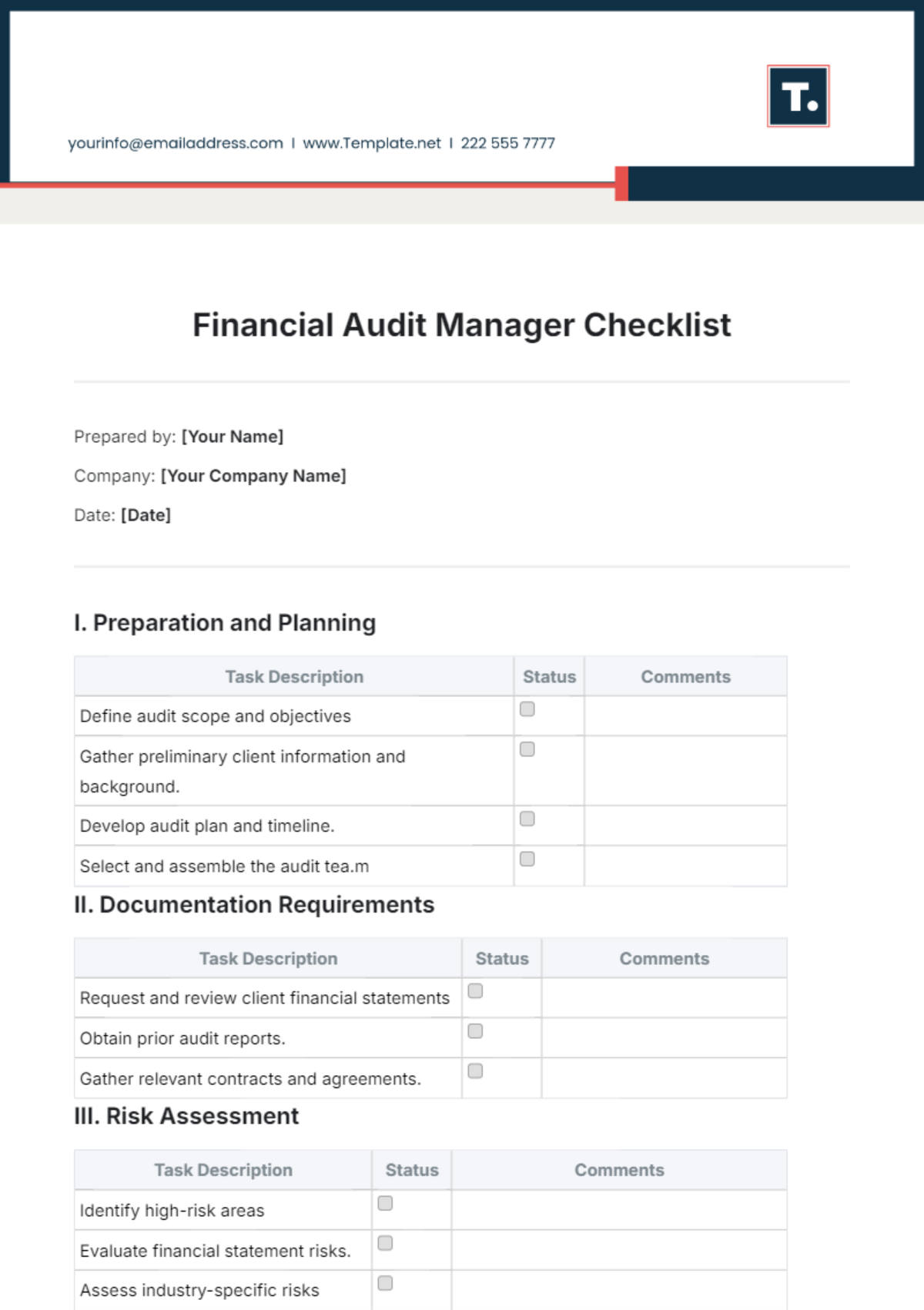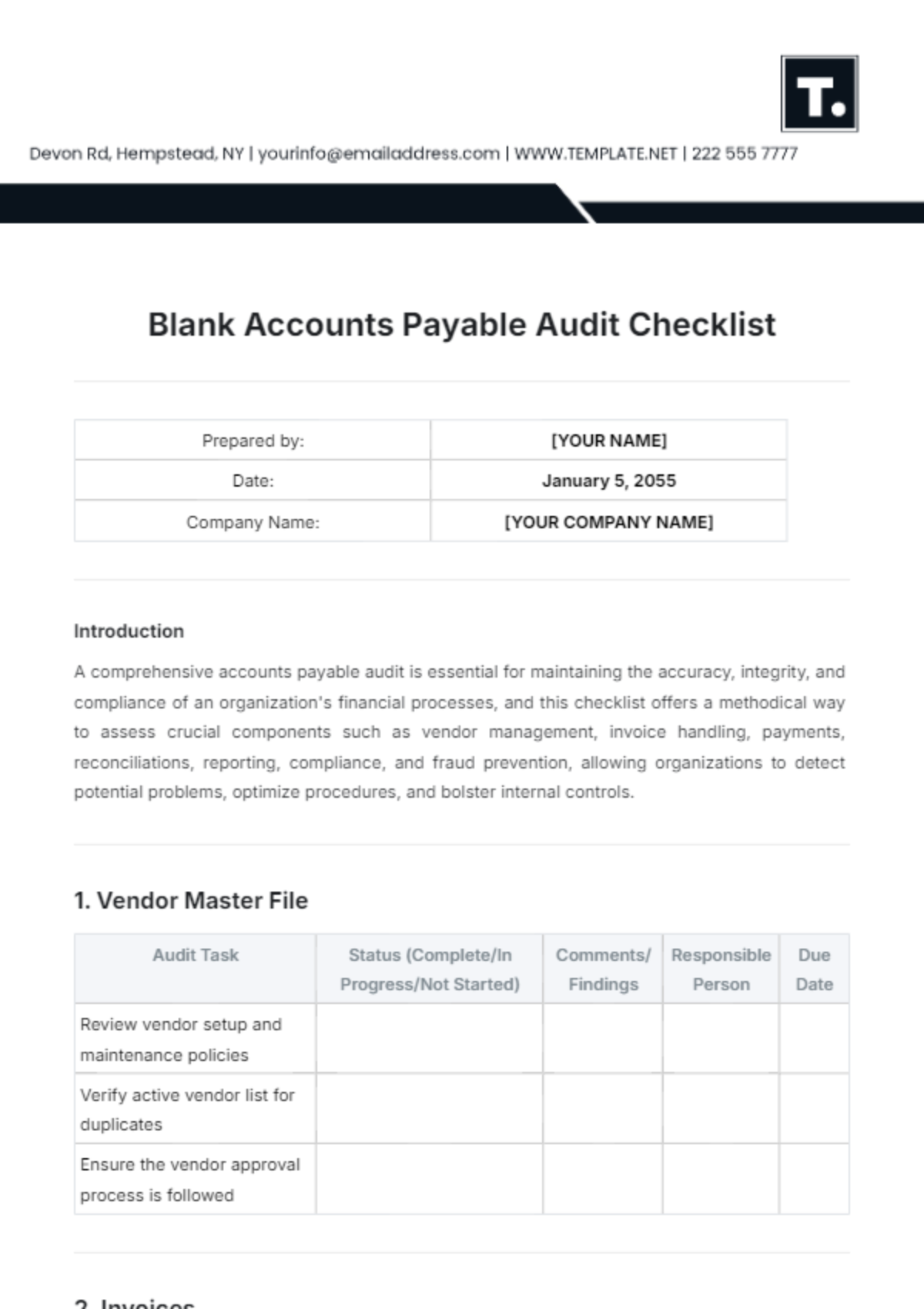Occupational Safety Audit Checklist
This Occupational Safety Audit Checklist is designed to systematically evaluate workplace safety practices and compliance. Use it to review safety areas, spot hazards, ensure regulation compliance, complete items, and document findings for continuous improvement.
I. Safety Management Systems
A. Safety Policy and Procedures
Safety policies are documented, up-to-date, and communicated to all employees.
Emergency response plan is clear, accessible, and includes evacuation routes.
Procedures for reporting safety concerns are established and known.
Safety policies are reviewed and updated regularly to reflect changes in regulations.
B. Safety Training and Awareness
All employees receive initial and ongoing safety training relevant to their roles.
Training records are maintained and include dates, topics, and participants.
Specific training is provided for high-risk tasks or equipment.
Training effectiveness is evaluated through assessments or feedback.
C. Safety Meetings and Communication
Regular safety meetings are scheduled and documented.
Safety communication includes updates on incidents, new hazards, and policy changes.
Employees are encouraged to raise safety concerns and provide feedback.
Meeting minutes and action items are recorded and tracked for completion.
II. Hazard Identification and Risk Assessment
A. Hazard Identification
Hazards are identified through inspections, reports, and employee feedback.
Hazard identification includes physical, chemical, biological, and ergonomic factors.
Hazard registers are maintained and updated regularly.
New hazards are assessed and documented promptly.
B. Risk Assessment
Risk assessments are conducted for all identified hazards with appropriate frequency.
Risk levels are evaluated based on likelihood and severity, and controls are applied.
Assessment findings are documented, reviewed, and communicated to relevant personnel.
Risk assessments are reviewed after significant changes in work processes or equipment.
C. Incident and Near-Miss Reporting
Incident and near-miss reporting procedures are established and communicated.
Reports are investigated promptly to determine causes and corrective actions.
Incident data is analyzed to identify trends and prevent recurrence.
Corrective actions are tracked to ensure timely implementation and effectiveness.
III. Workplace Conditions and Safety Practices
A. Worksite Conditions
Work areas are clean, organized, and free from clutter or obstructions.
Adequate lighting and ventilation are provided to ensure a safe working environment.
Spills and waste are managed properly, with appropriate disposal methods.
Temperature and humidity levels are monitored and controlled if necessary.
B. Personal Protective Equipment (PPE)
PPE is provided based on risk assessments and is appropriate for the tasks performed.
Employees are trained on proper PPE use, maintenance, and storage.
PPE is inspected regularly for damage or wear and replaced as needed.
Records of PPE issuance and maintenance are kept and reviewed periodically.
C. Machinery and Equipment Safety
Machinery and equipment are inspected and maintained according to manufacturer guidelines.
Safety guards and emergency shut-off mechanisms are in place and functional.
Equipment operators are trained and certified to use machinery safely.
Equipment malfunctions or safety concerns are reported and addressed immediately.
IV. Emergency Preparedness and Response
A. Emergency Procedures
Emergency exits are clearly marked, unobstructed, and known to all employees.
Emergency response plans are up-to-date and include procedures for various scenarios (e.g., fire, chemical spill).
Regular drills are conducted to practice emergency response and evacuation procedures.
Emergency contact information is readily available and updated.
B. Fire Safety
Fire extinguishers are accessible, correctly maintained, and regularly inspected.
Fire alarms and detection systems are operational and tested periodically.
Employees are trained in fire safety procedures and the use of fire extinguishers.
Fire drills are conducted regularly, and participation is documented.
C. First Aid
First aid training is provided to designated employees and includes CPR and basic medical care.
First aid kits are fully stocked, accessible, and regularly inspected for expired items.
Records of first aid training and incidents are maintained.
Procedures for reporting and treating workplace injuries are established and communicated.
V. Compliance and Documentation
A. Regulatory Compliance
The workplace complies with all relevant local, state, and federal safety regulations.
Required safety permits and certifications are obtained and current.
Compliance with industry-specific safety standards is ensured.
Regulatory changes are monitored and incorporated into safety practices as needed.
B. Documentation and Record Keeping
Safety records, including training, inspections, and incidents, are organized and accessible.
Documentation of safety policies, procedures, and audits is maintained accurately.
Records are reviewed regularly for completeness and accuracy.
Documentation is stored securely and retained according to legal requirements.
C. Continuous Improvement
A system for reviewing and updating safety practices is in place.
Feedback from safety audits, inspections, and employee suggestions is used to improve practices.
Previous audit findings and corrective actions are reviewed and addressed.
Safety performance metrics are tracked and used to drive continuous improvement.

















































